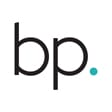The Illusion of Readiness in the Digital Age
We live in a world of immediacy. Digital solutions offer instant gratification for everything from meal planning to personal finance, making it tempting for some to believe that launching a business could be just as straightforward. Marketers who target budding entrepreneurs often suggest that, by finding their company, you’ve stumbled upon a cheat code for success. However, if you’re reading this, you likely understand a fundamental truth of entrepreneurship: There are no cheat codes to success. Understanding this is the critical difference between writing a “seemingly” prepared business plan and being genuinely prepared to take on the challenges of your market.
The allure of quick fixes in business planning, whether through templates, software solutions, or consulting services, is undeniably attractive. They promise efficiency and a seemingly direct path to success. Yet, the stark reality is that such solutions can, and often do, lead entrepreneurs to bypass the intricate, thoughtful process of crafting a business plan from the ground up. Relying on a structured data approach can result in a business plan that appears polished on the surface but lacks the depth essential for enduring the scrutiny of investors and the trials of time. Worse yet, launching your business or raising capital under these conditions could reveal a myriad of overlooked considerations, leaving you undercapitalized or underprepared for the challenges ahead.
“If you really look closely, most overnight successes took a long time.”
– Steve Jobs
“There are no secrets to success. It is the result of preparation, hard work, and learning from failure.”
– Colin Powell
Genuine business development arises from a profound understanding of your business’s core operations, goals, and value propositions. Entrepreneurs need to engage in detailed, fundamental exercises such as process mapping, SWOT analysis, or brainstorming using tools like the business model canvas. By prioritizing development fundamentals, entrepreneurs can create comprehensive, adaptable plans powered by genuine insights rather than simply filling in predefined blanks.
Adopting a fundamental approach emphasizes the importance of deep strategic planning over the superficial use of digital tools or vendors, ensuring that your business is not just seemingly prepared but truly ready to thrive in the ever-evolving landscape.
So, let’s dive into process mapping to illustrate the significance of fundamental frameworks in business planning. While certainly not the only tool, it serves as a great example of how exercises can elevate your business plan from good to great.
Process Mapping
Process mapping offers a clear, visual representation of your business’s activities needed to create, deliver, and capture value. This approach not only outlines your operations but also showcases how different parts of your business interconnect and interact, providing a level of foresight and preparedness that generic templates can’t offer.
Step-by-Step Guide to Process Mapping:
- Identify Objectives: Begin by defining what you aim to achieve with your business processes. Whether it’s building an application, delivering a product to a customer’s doorstep, or building a network of avid fans online, clarity on your objectives sets the stage for a focused and effective process map.
- List Activities: Detail every task necessary to meet your objectives. This step involves a granular look at the actions required, along with the resources, employees, and vendors involved. The goal is to leave no stone unturned, ensuring every aspect of the operation is accounted for.
- Sequence Activities: Organize the listed tasks in the logical order of execution. Some people like to lay this out on a Gantt chart. This sequencing takes into account the timing and dependencies between activities, highlighting the flow of operations and identifying potential bottlenecks before they occur.
- Assign Roles: Utilize the process map to assign roles and responsibilities clearly. This clarity ensures that everyone involved, whether you’ve hired them or not, will know their part, reducing overlaps and gaps in the operational chain. It also helps in determining your personnel plan and hiring the type of vendors or partners required for specific tasks.
- Analyze and Optimize: With the process map laid out, the next step is to scrutinize it for efficiency and effectiveness. This analysis might reveal redundant steps that can be removed or merged, opportunities for automation, or areas where resources can be optimized.
Implementing process mapping early in your planning can establish a well-considered approach to business setup and capitalization, ensuring you account for all necessary considerations for a successful operation and foundational scalability.
Remember, process mapping is just one of the many invaluable tools at an entrepreneur’s disposal. The key to successful business planning is selecting and blending the best frameworks for your unique situation.
The Role of Templates in Business Planning
To be clear, templates aren’t useless and they can play a role. At Businessplan.com, we understand an entrepreneur’s journey’s complexities. Our templates, bundled with Model-Based Planning® Worksheets, are designed for specific business models, offering a more tailored approach than generic alternatives. They’re intended not just to be filled out but to be used alongside strategic thinking exercises like process mapping.
Integrating these templates with insights from such exercises ensures they act as more than mere information containers. Instead, they become platforms for further analysis, decision-making, and model-specific planning.
A business plan’s true value lies beyond the document itself—it’s in the entrepreneur’s thorough research, strategic thinking, and the application of frameworks or exercises like process mapping or the business model canvas. Visit Businessplan.com for more on these concepts, found in our Pre-Planning Process and Plan & Pitch sections. By deeply understanding and applying these principles, entrepreneurs can craft plans that are not only uniquely tailored but also robust, strategic, and actionable.
Are you ready to explore the depths of strategic business planning? Businessplan.com is your partner every step of the way. Visit our website or connect with us on X or LinkedIn to start your journey toward a sustainable, successful business.




